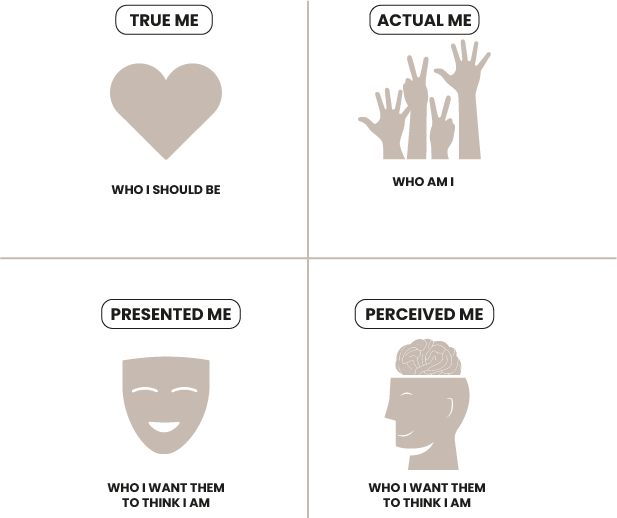December 14, 2021
The Fractured Self
As a child I was full of energy and quite uncontrollable. I had the sort of energy that required the use of canes and chains to control me (kidding…hmm sorta). Rough play and the collateral damaged that followed was normal. And sure enough every once in a while I would go beyond limit. One such time was when I broke my arm!
It happened after i had decided to climb the clothes drying pole (10 footer) and use it as a launch pad! The pain was excruciating to say the least! The doctors would discover 2 hairline fractures in my right forearm. Fortunately they would be able to restore the breaks with surgery following a cast and rest. The recovery would take months.
Even though the breaks were minor, the damage caused was noticeable even after mending. I was not able to function normally for quite some time. i did not have full range of motion in my arm. I also would not have sufficient strength to lift anything heavier than a pen. My daily activities changed and I was dependent on help of my family. It took some physiotherapy for things to return to normal. All this due to 2 mild fractures less than a few millimeters!

The same is true for damage to our identity. As I discussed in the previous post (part 1), the Segregated Self consists of 4 main parts. The True Me, Actual Me, Presented Me, Perceived Me (image). When we have gaps between these 4 aspects of our identity we begin to have distress. And when these gaps persist they create fractures within our identity. When we lack integrity we begin to live in a way that creates distance between our actions and beliefs. When these inner tensions stay unresolved they remain as fractured parts of our personality. This results in what Cassie Carsten calls this the ‘fractured self’.
Just as the fractures in my arm limited my functionality and increased dependency on others, it’s the same for the ‘fractured self’. While our identity seems functional and able to get by, in reality it’s malfunctioning. Our relationships and life tasks are not quite as effective as before the breaks. We have a limited range of expressions of our thoughts and actions. This is what Psychologist Carl Rogers calls ‘Incongruence’. The fractured self represents our dysfunctional selves. And while we seem to be able to get by our daily activities, it just doesn’t seem quite right. This is the result of those mild ‘breaks’ that are keeping us from being the best version of ourselves.
Functional Integrity
Integrity is one of the most important aspects of identity, and it would take me a long time to understand this. I used to believe integrity was just another word for ‘honesty’. While there is a connection between these two, I would soon learn they are not synonymous.
First Integrity comes from the latin root ‘integer’. The key idea here is to be whole, to be intact, or to be complete. To ‘have’ integrity is to be free of any internal parts. It’s the difference between an apple and a bowl of sliced apples.
Next factor is functionality. When we say a machine or object has integrity we are referring to how well it functions. For example, when a bridge has integrity, it means it is capable of standing steady allowing vehicles or people to move from one side to the other. The integrity of a bridge depends on how well it can hold firm without any cracks, faults, holes, or breaks. The test is to allow passage without breaking.
The same is true with us! When we are whole with no internal conflicts, when our beliefs and actions are in sync we have integrity. When we can have healthy relationships and manage our life goals we have gained integrity. Without integrity we will not be matching in our actions and thoughts. We will not have inner peace and be lacking authenticity in our relationships.
Most of us have internal struggles at some level. We’re not Jedi that balance the ‘force’, nor are we stoics like the Dalai Lama. We have all faced life battles and have fractures as a result. The question is what to do about these gaps? Can we reduce the intensity of these fractures? Can we repair the damage to ensure functionality? This restorative process is what Cassie Carstens calls becoming the True unified Me.
True Unified Me
Martha Beck in her book The Way of Integrity says “A lot of the areas we suffer psychologically stem from being out of touch with ourselves, people pleasing, negative habits(lying, gossiping, fighting), staying in flat or harmful relationships.” Not resolving these gaps will create disappointment in yourself. You will not have joy in who you are, you will not be free to be who you truly are or who you are meant to be! You will be tied up to living up to social norms or expectations of others; you will not be living out the true authentic person you were meant to be.
We need to reduce the discrepancy between the 4 segments. Bridging these gaps is the solution to gaining inner peace. We will be more connected to who we are and what we really want.
The existence of these gaps creates turmoil in your life. My gap was between the presented me & the actual me! I was afraid of being judged by those around me, I was not comfortable within my own skin. Those closest to me could see the restlessness.

I was engaging others out of insecurities and experiencing anxiety. In otherwards i was behaving in ways that would be acceptable to others and would always worry if I didn’t do so accordingly. I was not being authentic. This was causing harm to myself as well as damaging the relationships around me.
Bridging the gaps
To bring wholeness to yourself is a progressive journey. It’s not a checklist to be done in a day, but an intentional process that takes a long time. Here’s a few thoughts to ponder when bridging the ‘gaps’.
- Embrace your unique self. (accept the things about your self)
- Seek the purpose of your life, what you’re made for
- Face your fears! Dealing with them will release you for a life of bondage
- Unmask yourself. Be vulnerable with those who love you.
- Get Help! Coaches, Mentors, Counselors, Trainers, they can help to identify your blindspots
- Avoid the ‘performance trap’: the false belief that the more you achieve the more you ‘are’, the more worth you have.
Grappling with these points have helped me to come to a place of peace. Don’t get me wrong, I’m still very much a work-in-progress! I got my list of insecurities that pop up from time to time. However I can honestly say I’m at peace with who I am. I’m patiently working on my weaknesses with my coaches, counselors and mentors.
Coaching Application
If you want to really bridge these gaps and you’re ready to put in the work, here’s’ a few steps that helped me;
- List 5 values you want to live by. Ex: being honest, being charitable.
- Reflect if you are living with these values right now, in your current life and relationships.
- Write down the moments when you struggle to achieve each of these values.
- Discover the triggers: write down the thoughts that are keeping you from achieving the desired value at those difficult moments.
- This will reveal a discrepancy: a gap (between Perceived me & Actual Me)
- Write down 3 people you follow/admire.
- What about them do you find charismatic? List them
- Are their values matching yours?
- If not this reveals another discrepancy: gap (between Actual Me & Presented Me)
- Share your finding with a friend. Constructive criticism is an invaluable source of growth.
By applying these practices into your life you will gain more integrity. You will begin to be more intune with your inner self. You will find peace in your life journey. You will stop sabotaging yourself and begin to flourish in your chosen path. Your trusted relationships will become more fruitful and you will experience more joy.
Watch the full video on this topic on our youtube channel
If you found this topic interesting and you would like personal coaching
Contact us
Phone: +94-76433-6376
Email: consulting@thevergence.com
Resources:
Dimitri Pieries
Dimitri is a certified trainer, business & life coach. As a trained hospitality professional with over 10 years of sales experience in the US and Sri Lanka (including two Fortune 500 companies); he also carries a wealth of people and business skills that are helpful to his clients.






